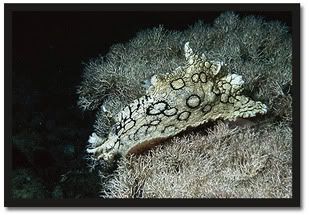Habitat
Since there are vary structures of mollusks, their habitat tend to be different to one another. Some mollusks live in a symbiotic relationship with other animals and plants, which means they live in association with each other for beneficial purposes.

Freshwater mollusks such as mussels, clams, squids and oysters, live in the aquatic ecosystem. Clams, mussels, and oysters expose a small portion of their body while the rest is buried beneath the dirt, mud, or gravel in shallow waters. The free swimming cephalopods, such as squid and octopus live in deeper areas of the ocean. Some mollusks can even be found in depths of 670 meters below sea level or more. Other areas where freshwater mollusks can be found are ponds, streams, marshes, and lakes. Only a few species can be found in one area, although freshwater mollusks have the most diversity in species.

The terrestrial species of the mollusks inhabit trees, gardens and other area where there is moisture. They sometimes attach themselves to rocks, other shells and plants to remain stationary. Land mollusks, such as some snails, lose water as they are actively moving. When water becomes unavailable, they will hide in their shell and keep themselves inactive as they wait until the condition improve to their satisfaction.

Freshwater mollusks such as mussels, clams, squids and oysters, live in the aquatic ecosystem. Clams, mussels, and oysters expose a small portion of their body while the rest is buried beneath the dirt, mud, or gravel in shallow waters. The free swimming cephalopods, such as squid and octopus live in deeper areas of the ocean. Some mollusks can even be found in depths of 670 meters below sea level or more. Other areas where freshwater mollusks can be found are ponds, streams, marshes, and lakes. Only a few species can be found in one area, although freshwater mollusks have the most diversity in species.

The terrestrial species of the mollusks inhabit trees, gardens and other area where there is moisture. They sometimes attach themselves to rocks, other shells and plants to remain stationary. Land mollusks, such as some snails, lose water as they are actively moving. When water becomes unavailable, they will hide in their shell and keep themselves inactive as they wait until the condition improve to their satisfaction.

